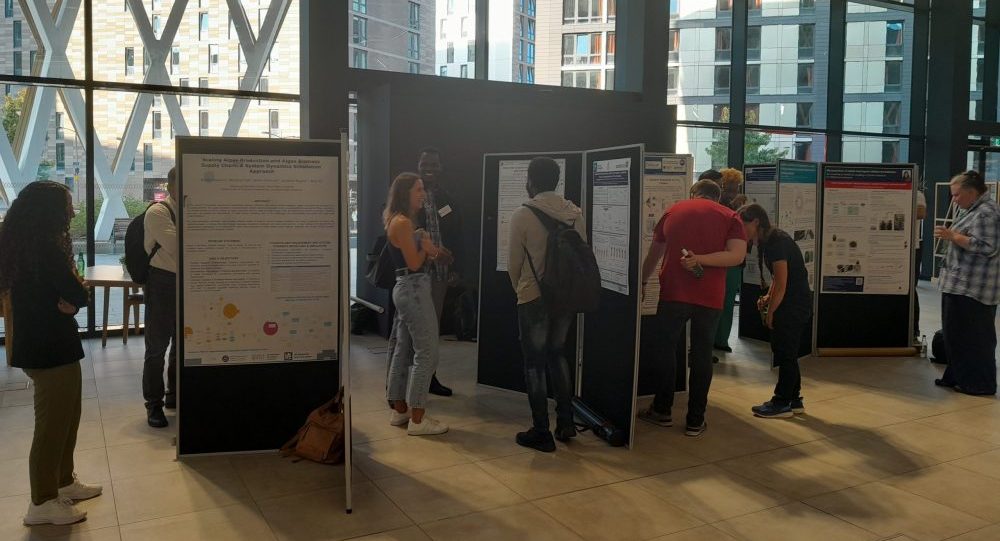Observations of the Circular Chemical Economy Summer School: A chemistry undergraduate perspective

Written by Beren Dempsey, University of Sheffield.
The 2023 Circular Chemical Economy Summer School hosted by Newcastle University brought together members of industry, academia, governance, and enthusiasts from the public taking a multidisciplinary approach to transform the chemical industry into a fossil-independent, climate-positive, and environmentally friendly circular economy.
Spanning three days, filled with talks and workshops, I was pleased to see the breadth of perspectives offered from all the speakers. Allow me to provide an overview of some of the key presentations that highlighted the essential aspects of a circular chemical economy.
The Summer School began with an introductory talk by Engagement lead Professor Libby Gibson giving an overview of the Summer School and Centre for Circular Chemical Economy. Chief scientist Jeremy Shears (Shell) was the first of a range of speakers for the day. Jeremy explained the necessity to not only de-fossilise our energy sources but also our industrial feedstocks. A significant portion of the world’s plastics is produced using carbon-based polymers, predominantly reliant on feedstocks derived from crude oil. The talk spotlighted a promising approach of addressing plastic waste, encompassing both consumer and commercial sources, through a meticulous sorting process followed by chemical recycling using a thermal breakdown method known as pyrolysis. Subsequently, these recycled products are seamlessly integrated into the production process at the cracker level to supplement newly extracted fossil-based feedstocks. While this represents a crucial step in the right direction, it’s worth noting that recycled plastics currently only constitute a fraction of the overall materials required, and we must also consider the energy consumption associated with the pyrolysis and depolymerization stages of processing waste plastics. Perhaps it would be beneficial for more research into biologically derived polymers that are biodegradable.

The first day concluded with an inspiring presentation by the founder of Sustainable Thinking Scotland (S.T.S) Sean Kerr. This remarkable social enterprise, located in the Falkirk district, is engaged in a triple mission of food cultivation, green waste recycling, and community well-being enhancement. S.T.S addresses the pressing issue of food insecurity by cultivating fruits and vegetables and donating them to local food banks. Over six years of operation, they have contributed a remarkable 8.5 tonnes of fresh produce to their community. Additionally, S.T.S embraces circular practices by recovering and repurposing organic waste materials. Through the pyrolysis of organic biomass, such as wood, in an oxygen-limited environment, they produce a stable form of carbon known as biochar. This versatile material finds applications in agriculture for improving soil quality and wastewater treatment, demonstrating the circular economy’s resource-efficient principles.
Before attending the Summer School, I had only a vague understanding of what a life-cycle assessment (LCA) entailed. However, the workshop on conducting an LCA on day 2 was incredibly enlightening. In essence, an LCA involves inputting various parameters, such as energy usage and ancillary materials (e.g., water and fertilizers), required for a specific production process into a computer program. This program then generates graphical representations of the entire process. The power of this software lies in its ability to create detailed flowcharts, which can be analysed to identify the most resource and energy-intensive aspects of a given process.
Throughout the conference, a recurring theme was the imperative of collaboration, not only between policymakers, researchers, and industry leaders but also among different sectors within the chemical industry itself. A great example was shared by Stephanie Terrie Brown from Pure Water International. Stephanie explained how their operations relied on ferric chloride as a flocculant, a chemical they traditionally purchased from suppliers. Interestingly, ferric chloride also happens to be a waste product in the electroplating industry. By fostering communication and collaboration between these two sectors, a transformative synergy emerged. Chemical waste that would typically have been disposed of found a new purpose, eliminating the need for synthesizing new ferric chloride for the water treatment process. Of course, the logistics of implementing such a system are complex, but the core principle of repurposing waste resources remained central to advancing the circular economy.

As I departed from the summer school, I, like all attendees, left with newfound clarity regarding the principles that underpin the circular chemical economy. With real-world examples and tangible blueprints for the future, our collective journey towards reshaping the linear economy into a circular and sustainable one is undeniably inspiring and promising.
